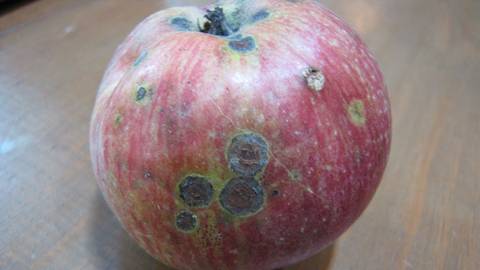
Do you have crabapples or apples growing in your backyard? If so, you must know about the diseases that threaten your trees. Apple scab is one of the most serious diseases that affect this plant family, especially in areas that experience wet springs. Southern Star Tree can help you protect your trees by providing the care and maintenance your trees need to grow healthy.
Apple scab produces lesions that appear on blossoms, leaves, and fruits. Call a tree care company immediately if you suspect the fungus has infected your trees. While the damage may not be instant, it can spread to other plants and compromise the well-being of your greenery.
As mentioned, apple scab is a fungal disease that produces lesions that are noticeable on fruits, leaves, and blossoms. If you notice olive-green or yellow spots on the upper side of leaves or dark spots on the lower side of young leaves, chances are your trees are infected. The lesions produced have poorly formed borders and are often confused about leaf fuzz or sooty mold.
If you are still determining the condition of your trees, Southern Star Tree can help to assess, detect, diagnose, and treat signs of infection before things get out of hand. Prolonged defoliation can take a toll on your trees, making them vulnerable to insects, diseases, and environmental stress like freeze damage. We recommend hiring a professional tree service for routine inspections to ensure minor signs are addressed in time.
The management and treatment of apple scabs is a cohesive process that combines resistant cultivars, sanitation, and fungicides. Working with a reliable tree service allows you to leverage their experience and knowledge when dealing with this fungal disease. Here are steps you can take to protect your trees from apple scabs.
The best preventive measure is to choose resistant varieties. Many scab-resistant apple cultivars include Crimson Gold, Crimson Crisp, Freedom, Liberty, Priscilla, and many more. Similarly, if you want crabapple cultivars, we can help you choose scab-resistant varieties to ensure your trees grow healthy.
Planting is more than just digging a hole, putting a tree seedling, and filling it with soil. Crabapple and apple trees should be planted in full sun and require sufficient space to mature. This allows proper air circulation and water to evaporate properly after watering. If your trees grow too close to each other, the susceptibility to diseases is high. Fungus thrives in damp conditions, and proper spacing ensures all the moisture dries.
Another effective way to manage apple scabs is to prune and rake infected leaves. This helps reduce the number of fungal spores to restart the disease cycle next spring. Apply urea before fall or after harvesting to speed up decomposition. The last thing you want is to deal with the widespread infection in autumn.
Contact our tree care company to learn more about apple scabs and other common diseases. Schedule a consultation and enjoy top-notch tree care and maintenance services at competitive rates.